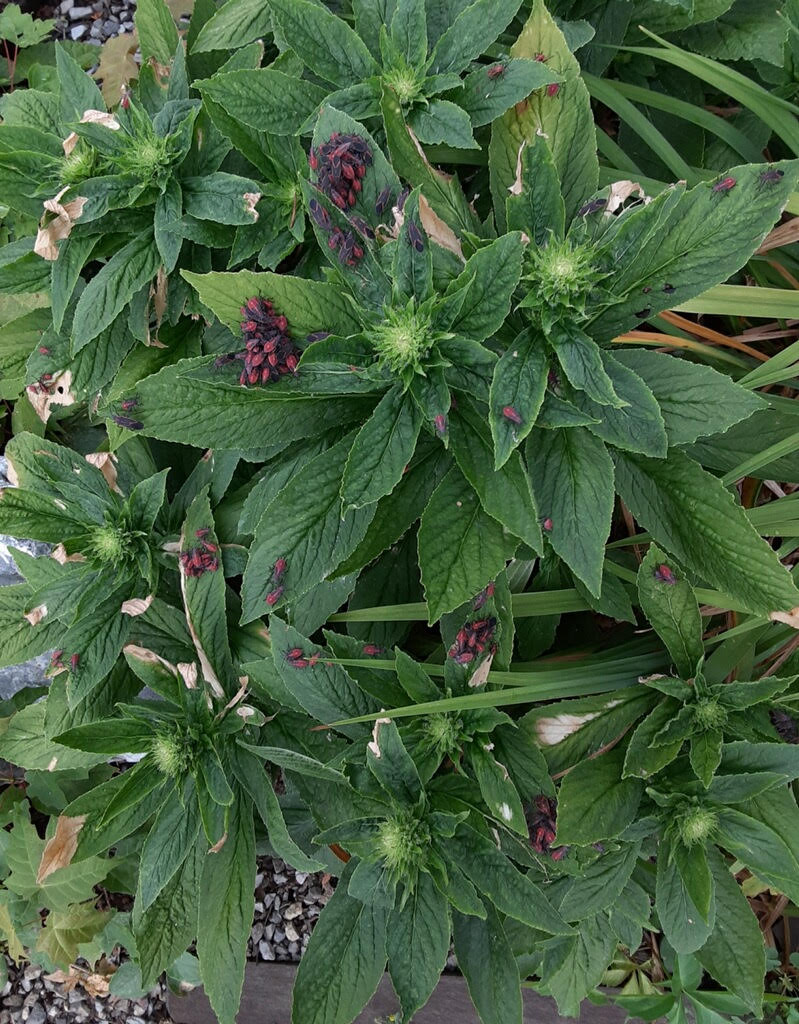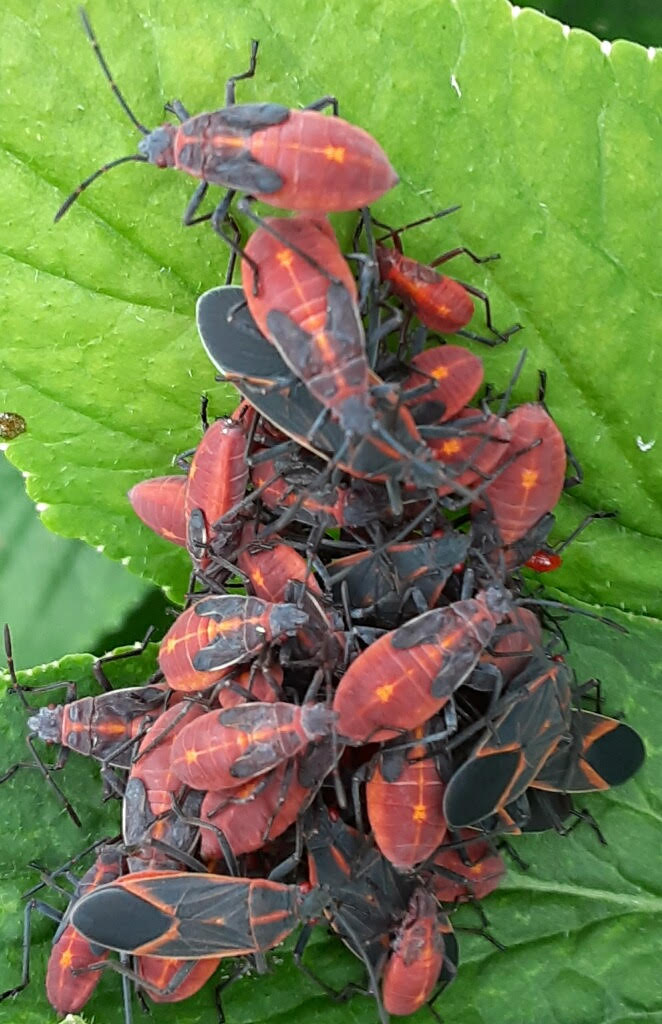By, Susan Sprout
I was surprised recently by a large amount of insects sitting on the leaves of some Great Lobelia plants. Maybe “amazed” would be a better word for it. There were a lot of them. I needed to identify them and learn why they were gathering there. Here’s what I learned – they are our native Eastern Boxelder Bugs. Considered “true” bugs because adults have piercing, sucking mouth parts and a characteristic triangle shape between the tops of their leather-like wings. The younger bugs with them are nymphs with bright red bodies, black antennae and legs. You can find them easily in the photo because they are the ones with small slate gray or black patches on their backs. These are their wing buds. When the nymphs emerged from eggs, they were only 1.3 mm in length. (There are 25.4 mm in an inch.) So tiny! Because they are invertebrates, or animals without backbones, they are held together, supported, protected by an exoskeleton made of chitin. It is stiff and hard. When the nymphs begin to grow, they must shed and replace that rigid exoskeleton with a new larger one in order to get bigger and attain adulthood with sexual organs and wings. They need to molt five different times, becoming darker red as they mature. The red V on the back of an adult is created by its folded wing edges. The other, larger red marks on their bodies may serve as a warning to predators that they are distasteful because they contain a pungent, bad-tasting compound. Preying mantis and spiders eat them anyway. Few birds will eat them. They sun together in large groups on warm surfaces. All of that red in one place probably serves to keep hungry predators from munching on them.

Boxelder Bugs feed almost entirely on the developing seeds of boxelder, maple, and ash trees. They will suck juices from the leaves, but prefer the seeds. They do not sting or transmit diseases and are not classified as a pest. They can be found east of the Rockies in woods and gardens. There is a similar species that lives west of the Rockies. In autumn, swarms of females can be seen looking for thick piles of plant debris in which to overwinter. They emerge in spring to lay eggs which are hidden in bark crevices, under leaves in safe areas.

Sometimes Boxelder Bugs are confused with the Eastern Milkweed Bugs that are reddish-orange and black in color. They are true bugs, too. Get yourself a bug book and check them out!



